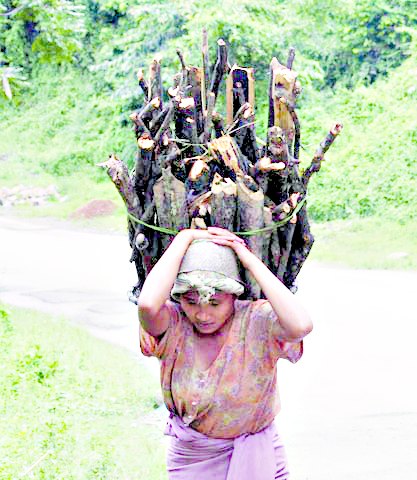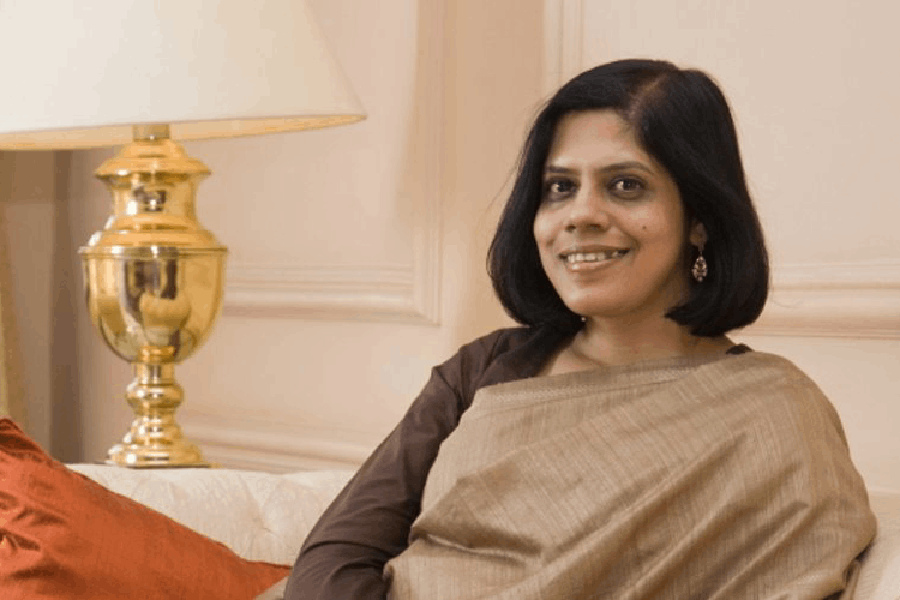
After 17 years of ceasefire with Naga rebel factions, Indian security forces are facing the heat again with the Burmese Naga rebel chieftain, S.S. Khaplang, back on warpath. The septuagenarian Hemi Naga warlord seems to have strategized brilliantly. His faction signed the ceasefire with Delhi in 2000, three years after the main faction led by Muivah and Issac Swu initiated their truce with India. But Delhi did not engage Khaplang's faction in the negotiations for a settlement of the Naga political problem. Khaplang is a Burmese national and the former home minister, L.K. Advani, had made it clear that Delhi could not negotiate with a foreign national on a problem India saw as her own. In recent years, Khaplang has been under huge pressure from Delhi, which wanted the Burmese Naga leader to stop giving shelter to active rebel groups of the Northeast in his remote bases in the Sagaing division. Known to his comrades as 'Baba', Khaplang pulled off a coup of sorts by arriving at a truce with Myanmar's Thein Sein government in 2012. That ensured his bases in Sagaing will always be safe from attacks by the Tatmadaw (Burmese army) that did not, in any case, seem much interested in chasing the Indian rebels out of its territory, as Bhutan and Bangladesh had done.
Now with Delhi indicating this year that it would not renew the ceasefire unless Khaplang stopped sheltering other rebel groups like Assam's United Liberation Front of Asom or the Manipuri and Bodo rebel groups, the Burmese Naga warlord pulled out of the truce without much ado to "intensify the fight for Naga independence" in March. A month later, he floated the United National Liberation Front of Western South-East Asia with a few other rebel groups like the Ulfa (Paresh Barua faction), the Kamtapur Liberation Organization, the National Democratic Front of Bodoland (Songjibit faction), the Kanglei Yawol Kunna Lup and the Kangleipak Communist Party of Manipur. The two top Meitei rebel groups, the United National Liberation Front and the People's Liberation Army decided to cooperate with the UNLFSWEA in staging attacks on Indian forces.
Then, in the last two months, the UNLFSWEA has resumed attacks on Indian army and paramilitary forces all along the India-Myanmar frontier. In at least six attacks in Arunachal Pradesh, Nagaland and Manipur, 35 Indian soldiers have been killed and scores of others injured. In the latest attack in Manipur's Chandel district , the rebels displayed a much better tactical sense and better use of sophisticated weapons like land mines and rocket propelled grenades, leading to high casualties in the ranks of the 6th Dogra regiment.
Delhi had anticipated that Khaplang could be successfully isolated from the Naga peace process, since two Nationalist Socialist Council of Nagaland factions led by Thuingaleng Muivah and N. Kitovi (both Indian Nagas) were opposing him already and a third was floated by his former comrades, P. Tikhak and K. Wangtin, immediately after the Burmese Naga leader reneged on the ceasefire with India. The NSCN's Muivah-Issac faction, Khole-Kitovi faction and the Wangtin-Tikhak factions were all led by Nagas from Indian states determined to keep Khaplang out of the Naga peace process lest it complicated the road to a final solution.
But though Khaplang may have been isolated in the Naga political process, he has used his 'Sagaing card' brilliantly to gain allies in the ongoing insurgent movements of the Northeast. After Bhutan and Bangladesh went hammer and tongs at anti-Indian rebels and Delhi's regional diplomacy helped neutralize potential staging posts of transborder insurgencies, Khaplang's bases in Myanmar's Sagaing Division remain the only safe transborder base for northeastern insurgents. Khaplang's control over these bases makes him a natural leader of an anti-Indian rebel coalition like UNLFWSEA.
Indian intelligence reports indicate Khaplang and Ulfa's Paresh Barua have successfully negotiated a supply of Chinese weapons through pro-Beijing surrogates in Myanmar like the United Wa State Army and the Kokang Myanmar National Democratic Alliance Army. That gives rise to suspicions that Beijing's spymasters may have played a discreet role in getting Khaplang and Barua to float the UNLFWSEA in much the same way they have got the United Wa State Army to take the initiative to forge an anti-Myanmar coalition of non-Burman rebel armies. A conference of these armies was held at the UWSA headquarters in May. Beijing's use of the 'rebel factor' against both Myanmar and India is historical, though dating back to the Mao-Zhou era when several batches of Naga and Mizo fighters trekked to Yunnan for training and the southwestern Chinese state emerged as the staging post for massive Burmese communist offensives in the 1960s. Beijing may no longer encourage export of revolution, like in the Mao era, but if it is disturbed by the fact of India or Myanmar drawing close to Western powers like the United States of America, it has the option to play the 'rebel card'. Paresh Barua has told journalists in interviews (this writer included) that the only prospect for gaining independence is through an intense Sino-Indian conflict. And the Assamese warlord has tried to forge a rebel coalition since 2011, when he first moved to Ruili on the China-Myanmar border after being forced to leave Bangladesh.
That the likes of Barua and NDFB's Songjibit see in Khaplang's safe Sagaing bases the only chance of keeping alive the last flicker of their insurgent movements and that Khaplang is too willing to play host to these allies because they provide him some strike power in Indian territory to remind Delhi he is too dangerous to be ignored are factors that Indian intelligence will now have to keep in mind while reworking their northeastern strategy. At least one Indian intelligence agency has strongly projected the need to neutralize the Sagaing base region as a staging post for anti-Indian insurgencies, without much success so far because of far too much attention going the Kashmir way and because the Naga insurgency theatre was largely quiet due to the ceasefires. Some other agencies played footsie with Khaplang, hoping for tactical windfalls, even gifting him an Indian horse to move around in his wild hills. The series of attacks on Indian forces in the last two months may help Delhi refocus its strategy now with no illusions about the Burmese Naga warlord. Myanmar has fought shy of attacking the Sagaing bases because it has other ethnic rebel groups in Kachin, Kokang and Karen areas to contend with. But Delhi cannot look the other way if Khaplang attacks its forces from the safe bases of Sagaing where a truce with the Tatmadaw allows his fighters to freely roam around with weapons and extort money or trade in local products. Latest reports suggest that Khaplang is recuperating in a Yangon hospital in full knowledge of Burmese military intelligence even as his fighters rain hell in the hills of northeast India. Myanmar is crucial to unlocking Manipur's 'Eastern Gates' for the success of India's 'Look East' policy, which cannot unfold to its full potential if the Northeast is held hostage by ethnic militancy. Delhi has to act fast against the raging fires in the Northeast.











